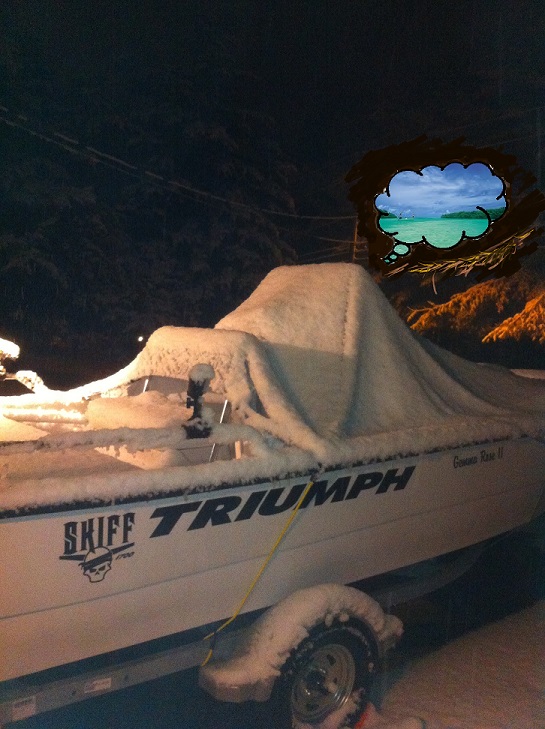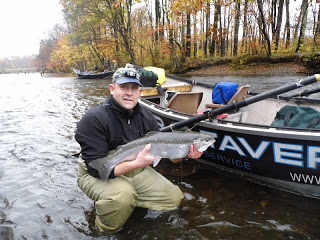It's not often that I use this blog as a pulpit, but this is an
important issue and something that could be avoided if enough anglers
speak up. I fear that many don't know what's at risk and by the time
they find out, it could already be too late. So here's the skinny...
One of only three CT DEEP
hatcheries, the Kensington State Fish Hatchery, will close due to
budget cuts if we don't voice our opinions to the powers at be. The key
is to make the State of Connecticut aware that this decision will
ultimately lose us money instead of save it by hurting fishing license
sales and other spending from trout and salmon anglers. Every phone call
and email/letter reiterating this message to members of the General
Assembly's Appropriations Committee, specifically the Conservation & Development Subcommittee, can help our cause.
In the fine print of this section
of the proposed State budget, the 8th bullet down on page 194
recommends reducing the number of state-run hatcheries (read:
Kensignton) to the tune of saving $149,910. I realize the State has a
spending problem and cuts need to be made somewhere, but should we
really be cutting things that generate more money than they cost to
run? I would argue that getting rid of everything this hatchery brings
to the table could cost us much more than $150K. An uniformed
legislator may look at the overall production of our three hatcheries
and easily write off Kensington because it's responsible for only 10% of
the trout stocked in Connecticut waters. However, this facility is an
example of quality over quantity and you have to look deeper to find out
what freshwater anglers would really lose.
Kensington Hatchery is unique because it's responsible for all of
Connecticut's Seeforellen brown trout, which are a German strain of
trout that grow
very large. The facility in
question just so happens to have the only disease-free stock of
Seeforellens left in the nation and closing it would mean tossing years
of hard work right out the window. The hatchery produces approximately
50,000 catchable size trout and 700 surplus broodstock trout annually
that are stocked in our most important trout waters. In addition,
250,000 of its fry and parr are used annually in programs to enhance sea
run and wild trout populations. Simply put, Kensington fish live
longer, grow larger, and are wilder in nature than trout coming from our
other hatcheries.
 |
| Seeforellen brown trout thrive in Connecticut lakes thanks to Kensington Hatchery. |
But it's not just about trout. Approximately 2,000 broodstock Atlantic
salmon are produced at Kensington Hatchery and stocked annually into the
Naugatuck and Shetucket Rivers and a few lakes. These fisheries are
quite popular now and attract anglers from around the Northeast. In
fact, it's estimated that Connecticut's Atlantic salmon fishery attracts
5,000 – 7,000 trips per year and those anglers spend a combined
$500,000 doing so. If Kensington closes, there will be
no more broodstock salmon stocked in our waterways! Furthermore, the
Salmon in the Classroom program, known as "Fish Friends," will no longer
exist in the 90 Connecticut schools that now receive salmon eggs,
and the last of the remaining salmon fry released in our rivers and
streams, about 300,000 per year, will also go bye-bye if Kensington
closes shop.
Chew on these numbers for a minute...
* - 251,000 state residents take 5.4 million fishing trips and spend $198 million per year
* - 51,000 non-residents take 457,000 fishing trips and spend $45 million per year in CT.
• Recreational fishing supports over 4,400 jobs in CT. •
Trout are the most sought after gamefish species in Connecticut
attracting approximately 2.1 million fishing trips per year and
generating ~$50 million per year in annual expenditures having a net
economic impact of $67.5 million per year.
• Approximately $2.8 million in annual license revenue is generated by trout anglers in Connecticut.
• Approximately 100 lakes and ponds and over 200 rivers and streams are stocked annually with trout.
• The overall benefit to cost ratio for Connecticut’s Trout Program is 25 to 1.
So what exactly is the rational again behind saving $149,910 by closing Kensington Hatchery??
Below
is the contact information for Connecticut Senators and Representatives
who have some say in the editing of the fish hatchery budget line item.
Please take a few minutes and reach out. Keep in mind that phone calls
have more of an impact than emails, but anything is better than nothing.
Thank you.
Sen. Bob Duff (Co-Chair)
Duff@senatedems.ct.gov; (860) 240-0414
Rep. Bryan Hurlburt (Co-Chair)
Bryan.Hurlburt@cga.ct.gov; (860) 240-8585
Sen. Clark Chapin (Ranking Member)
Clark.Chapin@cga.ct.gov; (860) 240-8816
Rep. Craig Miner (Ranking Member)
Craig.Miner@housegop.ct.gov; (860) 240-8700
Sen. Beth Bye
Email; (860) 240-0428
Rep. Ezequiel Santiago
Ezequiel.Santiago@cga.ct.gov; (860) 240-8585
Rep. Charles D. Clemons
Charles.D.Clemons@cga.ct.gov; (860) 240-8585
Rep. Peter Tercyak
Peter.Tercyak@cga.ct.gov; (860) 240-8585
Rep. Patricia Dillon
Patricia.Dillon@cga.ct.gov; (860) 240-8585
Rep. Mitch Bolinsky
Mitch.Bolinsky@housegop.ct.gov; (860) 240-8700
Sen. Andrew Maynard
Email; (860) 240-0591
Rep. Jay Case
Jay.Case@housegop.ct.gov; (860) 240-8700
Rep. Patricia Billie Miller
Patricia.Miller@cga.ct.gov; (860) 240-8585
Rep. Melissa Ziobron
Melissa.Ziobron@housegop.ct.gov; (860) 240-8700
Rep. Kevin Ryan
Kevin.Ryan@cga.ct.gov; (860) 240-8585
Rep. Roberta Willis
Roberta.Willis@cga.ct.gov; (860) 240-0271









